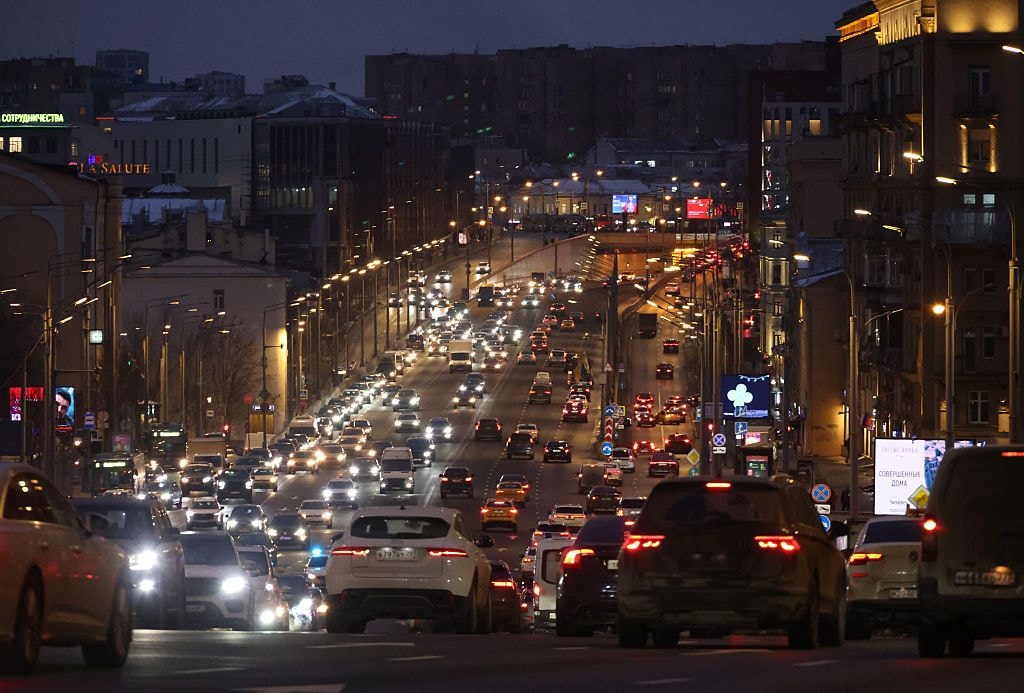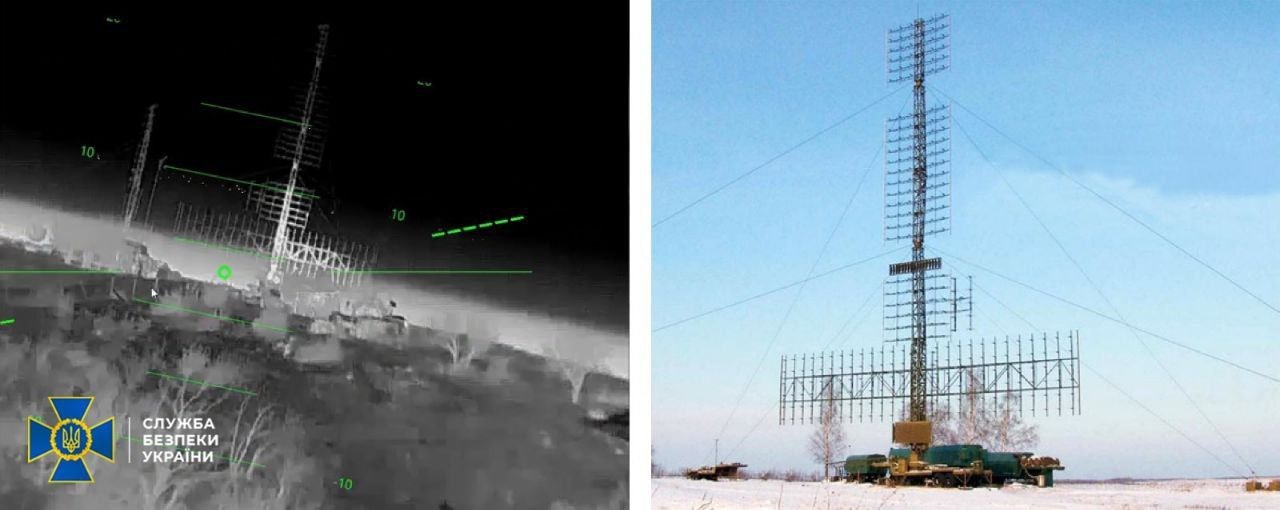Ukraine war latest: Russian weekend attacks on Kharkiv kill 4, injure around 70

Key developments on June 22-23:
- Russian attacks damage energy infrastructure in multiple Ukrainian regions
- Russian June 22 attack on Kharkiv kills 3, injures 56, including children
- Russia claims Ukraine attacked Sevastopol with 5 ATACMS missiles
- General Staff: Ukrainian forces hit command post in Russia’s Belgorod region
- Ukrainian army says some Russian troops withdrawing from Vovchansk area
- Fighting ongoing in Toretsk sector amid reports of captured village in 'gray zone'
Russian troops launched missile and drone attacks against multiple Ukrainian regions overnight on June 22, targeting critical energy infrastructure.
Ukraine's Energy Ministry said that energy transmission systems were attacked in the southern and western regions of Ukraine, damaging equipment.
Russia has recently intensified its attacks against Ukraine's critical infrastructure in a renewed assault against the country's energy grid, leading to blackouts. The overnight attack was the eighth such massive strike in recent months.
In Zaporizhzhia Oblast, two energy workers sustained injuries and were transported to the hospital as a result of the attack, grid operator Ukrenergo wrote on social media. In Lviv Oblast, a Russian missile struck an energy infrastructure facility causing a fire, Governor Maksym Kozytskyi reported.
Explosions were heard in the northwestern city of Lutsk in Volyn Oblast, Vinnytsia Oblast, and the city of Khmelnytskyi at around 5 a.m. on June 22.
Ukrainian air defense shot down all of the 13 Shahed-type attack drones and 12 of the 16 missiles launched by Russia overnight, Air Force reported.
Glide bombs attacks on Kharkiv
On June 22, Russian forces struck the city of Kharkiv with glide bombs, killing three people and injuring 56, according to Governor Oleh Syniehubov.
Russian glide bomb damaged a five-story residential building, a private house, five non-residential buildings, 16 commercial pavilions, 25 vehicles, 1 trolleybus, 2 pharmacies, and a car dealership.
Three more glide bombs hit an enterprise in the Kholodnohirskyi district, injuring four people and killing one, Syniehubov reported.
Moscow has recently intensified attacks against Kharkiv, Ukraine's second-largest city, with the use of missiles, glide bombs, and drones, destroying energy infrastructure and killing civilians.
On June 23, Russia launched yet another glide bomb attack against Kharkiv, hitting civilian infrastructure.
At least one person is known to be killed, and 12 people injured.
Russian troops attacked Kharkiv with three gilde bombs, damaging an educational facility and multi-storied residential buildings in the city’s Shevchenkivskyi district, Syniehubov reported. In Kholodnohirskyi district, the attack destroyed two private houses.
Part of Kharkiv is currently without power, and the metro has stopped, President Volodymyr Zelensky said following the attack.
"We will definitely restore everything and return to normal. We are working as hard as possible to deprive the Russians of the ability to terrorize our cities," he wrote on Telegram.
"Modern air defense systems for Ukraine, strong combat aviation, long-range weapons, and sufficient determination from our partners are what will certainly be able to stop the Russian terrorists."
Russia claims Ukraine attacked Sevastopol with 5 ATACMS missiles
Russian Defense Ministry claimed on June 23 that Ukraine had launched an attack against Sevastopol, a city in Russian-occupied Crimea, with five U.S.-made long-range ATACMS missiles.
Ukraine is regularly targeting military infrastructure in occupied Crimea.
Four missiles were allegedly shot down by Russian air defense, while the warhead of the fifth one "exploded above the city," the Russian Defense Ministry claimed.
Mikhail Razvozhaev, the head of the illegal Russian occupation government of Sevastopol, claimed that four people were killed, including two children, and 144 were injured in the attack.
Earlier in the day, Russian Telegram channels posted photos and videos of the alleged attack, reporting that many people were injured on the beach of Uchkuevka, a village in the northern part of Sevastopol.
The reports could not be independently verified, and Ukraine has not commented on the news at the time of publication.
Ukrainian forces reportedly hit command post in Russia’s Belgorod region
Ukraine’s military struck a command post of a Russian motorized rifle regiment in Nekhoteyevka in the Belgorod region, the General Staff of Ukraine’s Armed Forces reported early on June 23.
Nekhoteyevka is a village near the Russian-Ukrainian border located around 30 kilometers southwest of the city of Belgorod.
The strike was carried out by Ukraine’s Air Force in cooperation with other branches of the military, according to the General Staff.
"As a result of combat work, explosions were recorded. The target was successfully hit," reads the report. The Kyiv Independent couldn't immediately verify this information.
An hour after the General Staff's report, Vyacheslav Gladkov, the governor of Russia's Belgorod region, reported via Telegram on multiple strikes against his region but did not mention any attack on Nekhoteyevka.
Military says some Russian troops withdrawing from Vovchansk area
Some of the Russian forces are withdrawing from the area near Vovchansk in Kharkiv Oblast for replenishment due to a loss of combat capability, the spokesperson for the Khortytsia group of forces, Nazar Voloshyn, said on June 22 on national television.
Russia launched a new offensive on May 10 in northern Kharkiv Oblast, and Vovchansk became the scene of some of the heaviest fighting. Moscow's forces had advanced as far as 10 kilometers (6 miles) in the region but have been halted by the first line of defense.
Russia was "bogged down" in the embattled town of Vovchansk but was constantly replenishing its forces with units from other directions, Commander-in-Chief of Ukraine's Armed Forces Oleksandr Syrskyi said on June 12.
The withdrawal of Russian units was also seen near the villages of Lyptsi and Tykhe, where the Russian Armed Forces suffered losses, Voloshyn said.
Voloshin said that the Russian army had lost 60 percent of its troops, including both killed or wounded, in that direction of the front line.
"This indicates that the enemy has suspended its active hostilities in that area, as they were not conducted over the past day and in the morning," Voloshyn said.
Fighting ongoing in Toretsk sector amid reports of captured village in 'gray zone'
Ukrainian forces are holding back Russia's assault in the Horlivka — Toretsk direction in Donetsk Oblast on June 22 amid ongoing fighting, Voloshyn told the Kyiv Independent.
His statement comes as Moscow's troops have reportedly increased their attacks near the town of Toretsk after a "long lull" in fighting in the area.
Toretsk, the strategically important town located less than 8 kilometers (5 miles) from the front line, had a population of around 31,000 before the start of the full-scale invasion.
According to the crowd-sourced DeepState monitoring service, Russian troops allegedly captured the village of Shumy, located some 10 kilometers (6 miles) east of Toretsk.
"No map can show you what is really happening on the front line. Everything is completely different there, and no conclusions can be made about the front breakthrough or its stabilization," Voloshyn told the Kyiv Independent.













